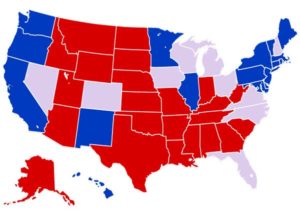Annuities in Qualified Retirement Plans
Annuities in Qualified Retirement Plans
By Russell Hill
Using annuities in qualified retirement plans.
Qualified annuities reduce your current taxable salary in addition to accumulating tax deferred earnings, when you contribute money to an annuities program through an employer (as one of the investment options in a salary reduction retirement plan).
Those who work for nonprofit organizations, will probably be able to choose either fixed annuities or variable annuities, or both, within their employer’s retirement plan. In addition, some companies have added annuities to their menu of salary savings opportunities.
Those who own a small business, or work for themselves, can invest in a qualified annuity by setting up a Simplified Employee Pension (SEP). A number of financial institutions, including banks, insurance companies and mutual fund companies, have generic plans that can be adopted. We have access to several generic plans and our financial specialists can provide assistance in getting them established.
Many qualified retirement plans are self-directed. In other words, the participant can choose where to put their money from the alternatives the employer offers. The contributions can be invested in any combination of the available portfolios, generally allocating on a percentage basis. For example, in a qualified annuities program that has a combination of variable annuities and fixed annuities, one might put 50% of their contribution into an equity investment portfolio, 25% into another equity portfolio, and 25% into a money market or fixed income account. In most plans the money can be reallocated among investments at least once a year. When a transfer is made there isn’t any income tax on the gains, but there may be fees for some switches. It is important to note that the underlying investment portfolios of variable annuities are subject to market risk.
Annuities in an Individual Retirement Account (IRA)
You can usually buy fixed annuities or variable annuities within your existing IRA. Many experts point out that the death benefit provision (which guarantees that if you die while still saving for retirement, your beneficiaries will receive at least the amount of your principal and in some cases, with the purchase of optional riders, which carry additional fees, that amount plus locked-in investment gains), as well as the potentially strong performance of variable annuities, can make them a smart choice.
If you want to buy annuities with your IRA contribution, you can select a contract that allows you to invest the amount annually that complies with IRS rules. When you’re ready, but no later than age 70½, the annuity can be easily converted to an income stream which you can’t outlive.
It is important to note that investing in variable annuities in an IRA (or other qualified plan) does not provide any additional tax deferred treatment of earnings beyond that provided by the IRA itself. You are adding a layer of additional fees to your IRA, which could make it harder to achieve the same return as you might otherwise earn–assuming that you allocated your money in similar ways. On the other hand, some of those fees go to pay for the insurance features, as well as the additional fees and costs of the contract, which many people think are valuable. You should consider these insurance features, and whether or not the annuity gives you a broader range of investment choices, when you consider funding an IRA or other qualified plan with fixed annuities or variable annuities.
How About a Roth IRA?
Roth IRAs are appealing investments, if you qualify to use them. Though they resemble non-qualified annuities – you invest with after-tax dollars and your earnings grow tax deferred – there is a major difference. After you reach age 59½ and your account has been open for five years, you can make tax free annuity withdrawals from the Roth. At the top of the tax scale, that can mean having $40,000 more on $100,000 in accumulated savings than you would if taxes were due.
Remember, not everyone is eligible to use a Roth IRA. Your contribution is limited to the annual IRA cap. There are also income limitations–you must have taxable compensation and your modified adjusted gross income must be less than $110,000 ($160,000 if you are married and file a joint return).
Individual Retirement Annuities (IRAs)
In this case, IRA stands for Individual Retirement Annuities rather than Individual Retirement Account. An IRA can also be established with an annuity provider and build an annuity-based plan There is the same limitations to the annual investment cap that applies to all IRAs (except rollovers), and there is the same requirement to begin withdrawing at age 70½ . The Internal Revenue Service sets specific restrictions regarding Individual Retirement Annuities which are not met by all annuity products.
The contribution cap for Individual Retirement Annuities was $3,000 for 2002 through 2004. It increased to $4,000 for 2005 through 2007, and reaches $5,000 in 2008. Since year 2002, for those who are age 50 or older, there has been a provision to make annual catch-up contributions each year.
A tax deduction for the contribution amount might be available for those who aren’t eligible for an employer-sponsored retirement plan or for those whose income is less than the current ceiling for deductibility. However, be sure to consult with your tax advisor and financial planner, before setting up the plan.
—————————————————————————————————————————————————————————————————————
We hope you found this article about “Annuities in Qualified Retirement Plans” helpful. If you have questions or need expert tax or family office advice that’s refreshingly objective (we never sell investments), please contact us or visit our Family office page or our website at www.GROCO.com. Unfortunately, we no longer give advice to other tax professionals gratis.
To receive our free newsletter, contact us here.
Subscribe our YouTube Channel for more updates.

Alan Olsen, is the Host of the American Dreams Show and the Managing Partner of GROCO.com. GROCO is a premier family office and tax advisory firm located in the San Francisco Bay area serving clients all over the world.
Alan L. Olsen, CPA, Wikipedia Bio

GROCO.com is a proud sponsor of The American Dreams Show.

The American Dreams show was the brainchild of Alan Olsen, CPA, MBA. It was originally created to fill a specific need; often inexperienced entrepreneurs lacked basic information about raising capital and how to successfully start a business.
Alan sincerely wanted to respond to the many requests from aspiring entrepreneurs asking for the information and introductions they needed. But he had to find a way to help in which his venture capital clients and friends would not mind.
The American Dreams show became the solution, first as a radio show and now with YouTube videos as well. Always respectful of interview guest’s time, he’s able to give access to individuals information and inspiration previously inaccessible to the first-time entrepreneurs who need it most.
They can listen to venture capitalists and successful business people explain first-hand, how they got to where they are, how to start a company, how to overcome challenges, how they see the future evolving, opportunities, work-life balance and so much more..
American Dreams discusses many topics from some of the world’s most successful individuals about their secrets to life’s success. Topics from guest have included:
Creating purpose in life / Building a foundation for their life / Solving problems / Finding fulfillment through philanthropy and service / Becoming self-reliant / Enhancing effective leadership / Balancing family and work…

MyPaths.com (Also sponsored by GROCO) provides free access to content and world-class entrepreneurs, influencers and thought leaders’ personal success stories. To help you find your path in life to true, sustainable success & happiness. It’s mission statement:
In an increasingly complex and difficult world, we hope to help you find your personal path in life and build a strong foundation by learning how others found success and happiness. True and sustainable success and happiness are different for each one of us but possible, often despite significant challenges.
Our mission at MyPaths.com is to provide resources and firsthand accounts of how others found their paths in life, so you can do the same.
Could “Red” States Actually Be Considering Tax Hikes?
Revamping the nation’s tax system is a very hot topic in Washington D.C. at the moment and that’s not going to change any time soon. One of the reasons Donald Trump was elected president was his stance on simplifying the country’s tax system and lowering the nation’s tax bill. This was a common theme…
Did I Accomplish All I Wanted?
Did I Accomplish All I Wanted? When you think about life, what do we have that comes of lasting value? Eventually, we go to the grave and the things that we acquire don’t go with us, but the memories that we leave behind and relationships with others will be long lasting. I recently had an interesting experience…
Important Tax Filing Deadlines You Don’t Want to Miss
Before you send in your tax return there are a lot of things you have to remember, which is why having a tax checklist is good idea. Of course, the right accountant will help you with that as well. However, before you ever get to that final point in the tax-filing process, you need to…
Which Tax Policy Issues Will Be Big in 2017?
Taxes, taxes, taxes. One could argue that 2017 will bring more changes to our country’s tax system and policies than we’ve ever seen before. The hope is that all that change will bring about better rewards, including a simplified tax return process and tax cuts for most, if not everyone. So as the New…




